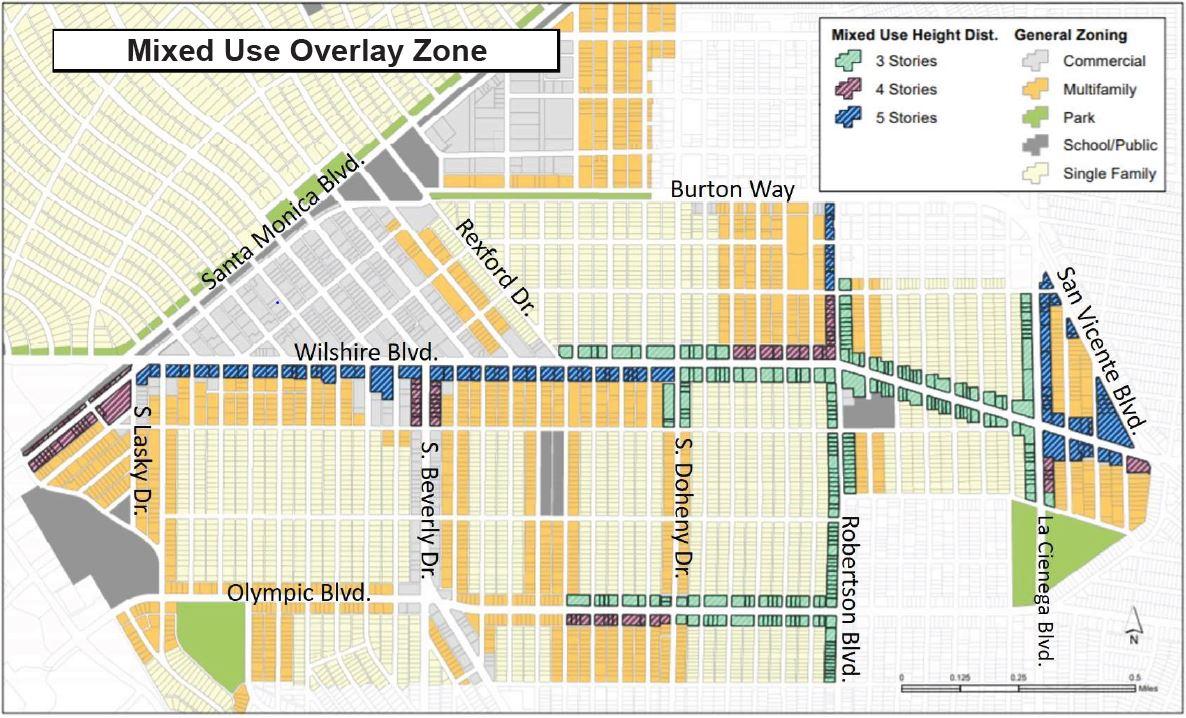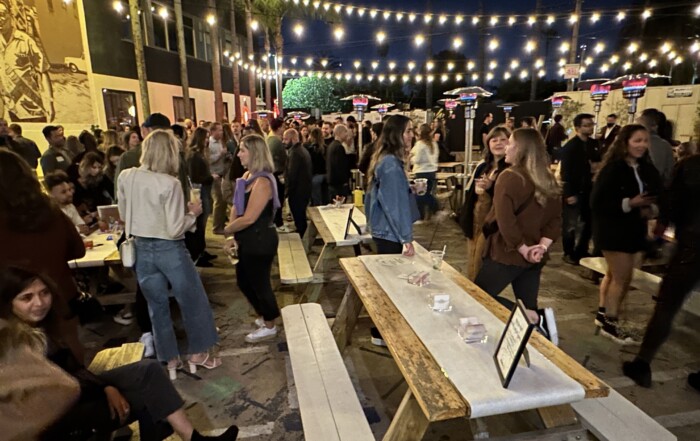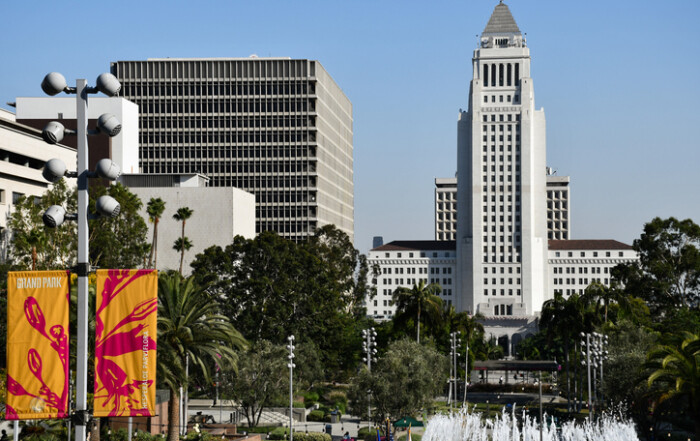After more than three years following its implementation, the Beverly Hills City Council discussed its Mixed-Use Overlay Zone (MUOZ) with the hopes to continue to expand the city’s housing stock without disturbing its makeup.
The current MUOZ is an addition to the city’s zoning map that allows for the first mixed-use developments — which include both retail space and residential units — to be built in Beverly Hills. Most of the lots within the overlay zone are restricted to the most significant corridors in the city such as Wilshire Boulevard and La Cienega Avenue, and allow for buildings between three and 35 feet tall to five stories and 55 feet tall to be built on those lots.
Expanding on both of these limitations was among the options considered to promote developer interest in utilizing these zones. In its three-year lifespan, only one project has been approved within those zones, and both this and the three other prospective projects in the zone currently under review use state-related density bonuses and incentives as part of their projects.
“It’s become apparent that the current system in place is hardly utilized, and at times ineffective,” Councilmember Sharona Nazarian said.
There have been concerns regarding the height of buildings and overall density, so one of the suggestions from city staff was to change how the residential unit cap is calculated to create more units without significantly changing other building characteristics.
However, with this increased density comes an increased need for parking — a prevalent issue in the community and a concern expressed by council members and members of the public. New laws have continued to give relief to more projects on parking requirements, and those located within a half mile from a Metro station are not required to provide any parking.
Councilmember John Mirisch noted this concern in his comments, and suggested the potential to strip residential parking permit rights from developments that are not providing adequate parking.
Adaptive reuse projects — where vacant commercial buildings are converted into residential units — were also discussed as part of efforts to increase the housing stock in Beverly Hills. Mayor Julian Gold was a proponent of that approach, noting the high number of buildings in the city that have good prospects for conversion into a residential property.
“In our city, because we do have a lot of older office buildings which are at least partially vacant, it might be an opportunity,” said Gold. “You already have the parking, it doesn’t change the height or the density or the way it looks.”
Ties between the success of this kind of ordinance and the city’s ability to get its Housing Element approved by the state were also key points of the meeting. City planner Masa Alkire hypothesized that developers may turn away from Beverly Hills to other cities because of their superior incentives. Introducing zone-specific incentives is another of the options that was discussed to bring in more development.
All of these concerns will be expanded upon further in a city staff report to the Planning Commission on the subject at a future meeting before any changes are made.
Stay informed. Sign up for The Westside Voice Newsletter
By clicking submit, you agree to share your email address with Westside Voice. We do not sell or share your information with anyone.








